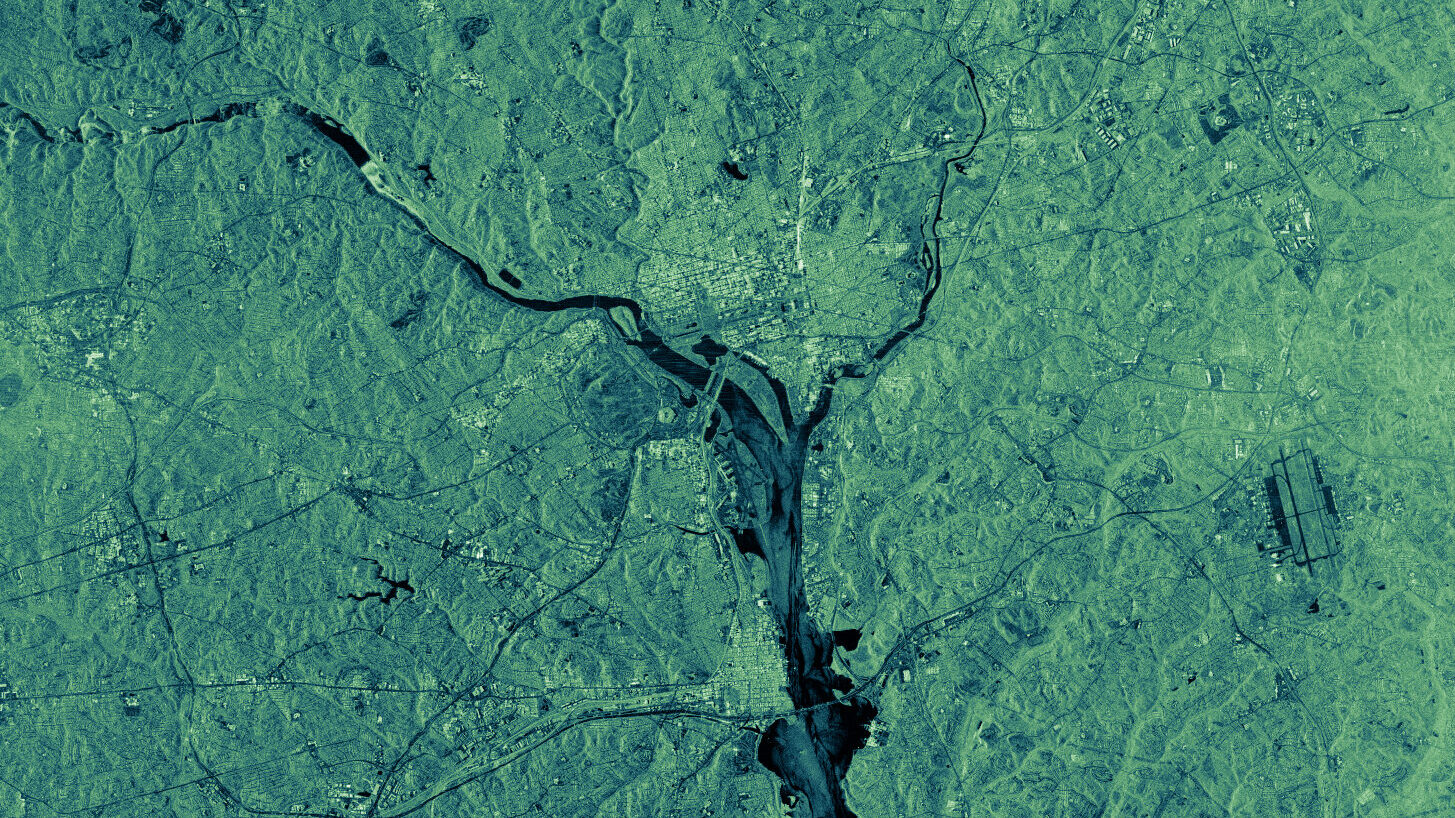
SAR image from Finnish startup ICEYE.
WASHINGTON: With a new round of investment that includes a long-term, “strategic” financial commitment from defense giant BAE Systems, Finnish startup ICEYE is looking to expand both its constellation of synthetic aperture radar (SAR) satellites as well as its defense-related analytical products, CEO Rafal Modrzewski says.
“We are not as concentrated on defense work perhaps as much as others are, although we do support defense customers or customers that would be considered from within the defense/intelligence industry,” Modrzewski told Breaking Defense. “Because we don’t focus as much, we are not actively developing, so to speak, surrounding products in order to sell them more complex systems, if you will. And this is what we would need a partner for, ultimately.”
ICEYE US, the company’s American arm, just last month won a study contract from the National Reconnaissance Office that will allow the spy agency to assess its capabilities to meet intelligence needs under a future program of record. And Modrzewski noted that the US is one of the company’s fastest growing markets.
BAE Systems, one of the largest defense contractors in the world, has for several years now been funding small startups to get innovative technology quickly to its customers, including the Pentagon. Through an initiative called FAST Labs, BAE is both providing seed capital directly to startups and funding a number of accelerators to widen the potential market.
Interestingly, ICEYE’s Thursday press release notes that BAE also will be a customer for its SAR imagery. SAR can take images at night, through clouds and heavy weather, unlike traditional space-based electro-optical cameras.
BAE was one of two new investors, along with Kajima Ventures, contributing to ICEYE’s recent series D funding (usually the last set of venture capital investment before a startup goes public) that swept in $136 million. The infusion of funds has brought the Finnish firm’s financing to a total of $304 million, which the press release points out is the largest New Space fundraising next to SpaceX.
Modrzewski told Breaking Defense that the new money would primarily be used to expand ICEYE’s constellation of 16 satellites in Low Earth Orbit (stationed in the very busy orbit between 500 and 600km) by 10 additional birds. Some of the new satellites will be used to replace current ones, he said, with the oldest one now hitting its planned operational lifetime of three years.
However, the additional satellites also will help ICEYE reach its goal of imaging the same spot on Earth every eight hours, Modrzewski said.
ICEYE boasts that it was the first commercial SAR company to provide “Daily Coherent Ground Track Repeat (GTR) imaging” that allows a user to monitor patterns of life at a ground facility or a port.
GTR “is this whole new method of really capturing SAR imagery,” Modrzewski enthused. “We can do it globally every for 24 hours, but we really want to push it down to eight hours. And that requires a whole constellation on proper orbits. And so those were that’s where all those satellites are going to be directed.
“The beautiful thing is that this constellation supports both our current customers, as well as kind of working in support of the solutions because, as you can imagine, the Ground Track Repeat provides a fantastic way to help us identify what’s really going on,” he said. “I’m sorry, I’m obviously excited about this. My answers can be a bit lengthy.”
Modrzewski explained that while this new capability will have advantages for defense customers — think tracking ships on the high seas or keeping tabs on deliveries at a facility — the mission he is currently most interested in is helping civil and commercial customers track fast-moving wildfires.
The focus on environmental impacts and climate is not new for ICEYE. As its name suggests, the founders were first and foremost aiming to monitor changes in Arctic ice.
Russia vetos US-Japan resolution against nukes in space, ‘unprecedented escalation’ in UN fight
“Although Russia would not be expected to vote for a resolution aimed at its own conduct, its response that it is ‘against’ putting nuclear weapons in space is just vague enough to not quite be reassuring,” said Jessica West of Canada’s Project Ploughshares.


























